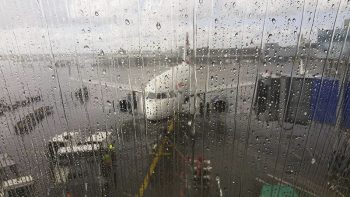
For the first time, the Costa Cruises’ ship, Costa Diadema, used a shore power connection during its call at the port of Kiel in Germany.
On 07JUN, 2024, the ship used the shoreside power at Kiel’s Ostuferhafen terminal.
After completing the integration tests carried out in recent weeks, Costa Diadema was able to be fully supplied with the shore power system at the Ostuferhafen cruise terminal. The use of shore power to supply energy to its cruise ships allowed Costa Diadema to switch off its engines while at berth, reducing direct emissions into the atmosphere.
Costa Diadema is scheduled to connect to the shore power system in the port of Kiel for its following 16 calls, including during the deployment of the ship until the end of the summer.
In 2024 Kiel will be a very important port for Costa programs in Northern Europe. From May 10 to Sep. 19, Costa Diadema will visit Kiel every Friday as part of a weeklong itinerary to discover the Norwegian fjords. Costa Diadema is using Ostuferhafen cruise terminal – located outside the city center of Kiel – as the turnaround port for its operations.
“The debut of shore power on our fleet is a further step in on our decarbonization journey. This important result for Costa was achieved thanks to the cooperation with the Port of Kiel. We are fully committed to continuously improve the environmental performance of our ships both while sailing and while berthed in ports” – said Mario Zanetti, President of Costa Cruises.
Costa Cruises aims to operate a net zero GHG emissions fleet by 2050.
The company is working to further improve the energy efficiency of the fleet already in service and support innovation in port infrastructure. Part of this path is the introduction of the first ships powered by liquefied natural gas (Costa Toscana and Costa Smeralda), the commitment to equip its fleet with shore power connection and to work closely with port authorities to foster increased adoption of this technology; the introduction of Advanced Air Quality Systems (AAQS) on non-LNG ships to improve air quality and reduce emissions in port and at sea; redesigning routes to reduce fuel consumption; and many other initiatives.
To continuously improve the environmental performance of its fleet, Costa relies on the support of the Carnival Maritime Decarbonisation Department, created specifically with the aim of developing and testing new technologies to reduce our environmental impact. Examples of these technologies to reduce our environmental impact are an innovative lithium-ion battery system; air lubrication systems in the hull to reduce drag, thereby cutting fuel use; methanol-powered fuel cells; new methods for carbon capture and storage; low-carbon alternative fuels such as bio-LNG or liquefied biomethane.





